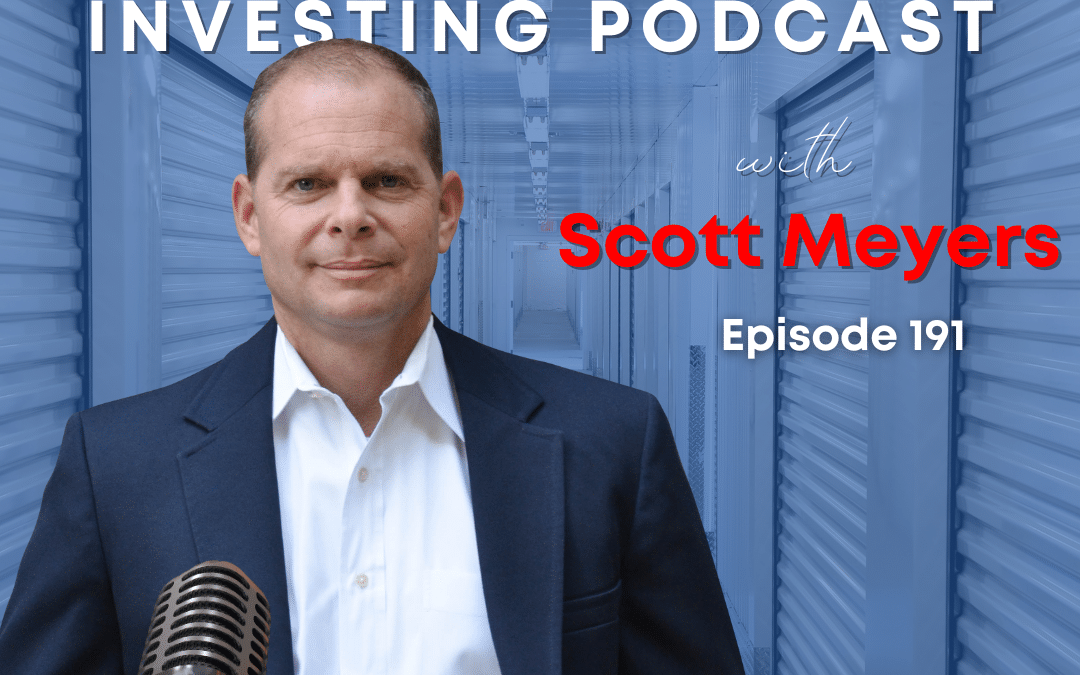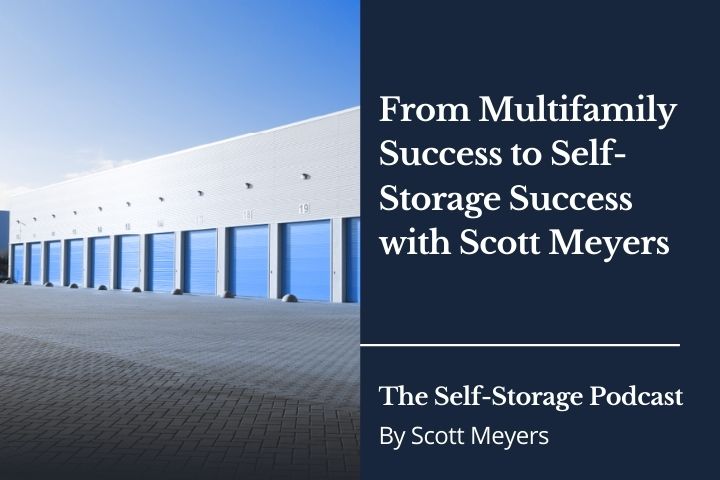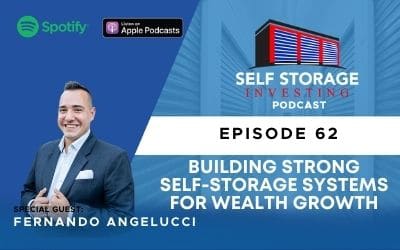Are you making the right moves in self-storage site selection, or are you risking costly mistakes?
In this episode of, Scott Meyers dives deep into one of the most critical aspects of self-storage development: site selection.
Scott explains how to evaluate potential sites, discusses the importance of consulting experts for feasibility studies, and highlights key factors such as zoning, site size, market demand, and competition.
WHAT TO LISTEN FOR
03:33 Understanding Zoning and Planning for Your Site
07:01 Ideal Site Size for Storage Facilities
15:11 Matching Facility Design to City Requirements
19:59 Positioning Your Facility Against Competition
Leave a rating for this podcast with one click
CONNECT WITH US
Website | You Tube | Facebook | X | LinkedIn | Instagram
Follow so you never miss a NEW episode! Leave us an honest rating and review on Apple or Spotify.
Episode Transcript
Announcer (00:03):
This is the Self-Storage Podcast.
Scott Meyers (00:09):
Hello everyone and welcome back to the Self Storage Podcast. I am your host, Scott Meyers, and today we are going to be continuing this episode. We’ll focus on the continuing list of mistakes that new self-storage investors make, but more importantly how to avoid them. And so what we’re going to be discussing today is mistake at number four, and that is evaluating potential sites or poor site selection. So when evaluating at potential self-storage sites, so we’re going to be focusing on mainly development sites. And so this goes for all sites and hopefully people have done their homework before they built a site and they didn’t fall into these pitfalls or these made these mistakes. But we’re going to be focusing on the development site. So if you’re looking to develop a self storage facility, what are the things you’re looking for in terms of site selection? So what should we be looking for in evaluating potential self storage sites?
(01:00):
Well, it said that location. Location are the three most important things when looking to develop a self storage facility. Actually, I think it’s for all about real estate, but you get the idea, and that is because within self storage, it is very critical that we look at the three to five mile radius of a particular site that you are evaluating because that’s where your clients are going to come from. It’s very rare that they’re going to travel outside of that. And so we’re going to look at the demographics with inside of that little bubble. And so roughly three to five miles. Five miles if it’s a little more rural or on the outskirts of three miles for most sites that we’re looking in and evaluating. And if you’re in a downtown, a major metropolitan statistical area, probably no more than that one mile. But for the purposes of avoiding these mistakes when it comes to site selection, we’re going to focus on the three to five mile and the first step in evaluating any potential site.
(01:53):
We do a lot of this in-house, but if you’re starting out, if you’re new in self storage, if you have a site that you have identified, you found it for sale, it’s something you’ve inherited, it’s a piece of land that you already own or have the opportunity to purchase. If you’re not, you’re new to self storage and not too familiar with how to evaluate a potential site, then you’re going to hire a consultant to do a feasibility study to perform a feasibility study for you. So these consultants have been in the industry for a number of years. They understand just exactly what it looks like to be able to determine whether a potential site is going to work for self storage. And so these consultants, when they take a look at a site, they’re going to do these things that we’re going to be talking about and that is to put yourself in the best possible position to make sure that a facility is going to be successful once you build upon this particular site.
(02:47):
And conversely, a consultant’s job is also to let you know if it’s not going to work or if it’s going to take longer than you anticipated or if the numbers just don’t line up and they will make a recommendation as to not build on a particular site, which yes, that is disappointing to spend that amount of money with a consultant only to find that. But I’ll tell you that’s a drop in the bucket compared to moving forward beyond that recommendation. And even if you do get funding from your lenders and your private equity partners or just your own cash and it doesn’t succeed well, and then was money well spent. So what should you be looking for and what are the consultants going to be looking for in a potential site if you’re looking to build or develop a self storage facility? Well, first of all, looking at the site, what are the zoning and the planning board have to say about this particular site?
(03:33):
Will they allow self storage already? Is it already zoned for self storage? Is it zoned for commercial? Could you potentially get this rezoned and or get a permitted use to develop a self storage facility? Well, you’ll be able to take a look in the public records and determine just exactly how it is listed right now and what is permissible. Then if it turns out that this is in a very desirable location for all the other factors, yet it is not zoned currently for cell storage, well then it’s time to go down and meet with the planning board and ask them the questions. And it always amazes me when we talk about this and we’re coaching our students on the development and of our education systems that hey, you have to go and reach out to these folks to determine just exactly what it is that you can do with this site.
(04:19):
And also to see if maybe other the lazier self storage competitors in your market have not done this. Then you may have stumbled across a fantastic site that even though it isn’t zoned for cell storage, you will go down and discuss with them is there an opportunity that we could get this permitted for self storage and we could get a variance for this? And has anybody brought this forth before? But that doesn’t happen until you go down and you have that meeting with them to determine just exactly what this looks like. And while you’re at it, I would ask the city so that even if this site doesn’t work, if the city in the area, the general area has a need for self-storage and the rents are high, income is high and it tick all the rest of the boxes if you find another site, how amenable is the zoning and planning board to granting you zoning for self-storage to build within their city, within their town?
(05:12):
Because we have found some zoning boards that believe it or not, that are not open to having self-storage in their town. And some of them treat it as if it’s their town and that they were voted in by the folks that live in that town, but they’re treating it like their own personal monopoly board. And we don’t want self storage within our city limits because they’re ugly. And if people have that much stuff, they need to go store it somewhere else. They can do it in the county, but not in my city, I mean not in our city. And we’ve heard them say those exact same words to which we have to politely not our heads. And then if we see it’s going nowhere, then either decide to pursue or pursue securing a land use attorney to maybe step in and see if they can negotiate on our, or maybe say, Hey, you really are holding up commerce and that’s kind of illegal and there’s no reason why you should keep these developers from developing this self storage facility at this site here.
(06:08):
Either way, we want to know if we’re facing an uphill battle or if they’re going to green light self storage. Also, while we’re at it, I’d like to know, while we’re talking with the zoning board and the planning commission, I’d like to know if other projects have been brought forth and were they successful or were they turned down? So again, kind of leaning towards defining out whether they are, whether the town is looking at self-storage favorably, but also if there’s other sites that have been brought forth. Were they approved, were they not approved? Are there any on the board right now? We want to know if there’s any potential competition coming and if there are we going to be out located because that is a real possibility that there are other sites out there that are better. And so we just want to know just exactly what is happening in the market to the best of our knowledge and to the best of the zoning board’s knowledge to get an understanding of the landscape.
(07:01):
Another consideration is the site size. It’s very important that we would like to have the largest site possible that we have the ability to develop single story storage on or even multi-story or both and then have the ability to either utilize or expand into the additional ground that we may not need at the time or to sell those out lots. Either way, if we’ve got a site that where the price per acre is very favorable and a zone for self storage and we feel that we can get a zone for self storage, then we would like to have as much as possible within reason to have the flexibility to be able to grow into. So typically we’re looking for sites that are four to five acres in size that allows us to typically, depending upon the market, be able to build even single story, the amount of square footage that we would like to have to be able to serve a three to five mile area.
(07:52):
We have purchased sites that are less than two acres and gone north. We’ve gone vertical with those and those that work very well. And as a matter of fact, you get more units on that piece of ground and not have to buy as much and as many acres to in order for that to happen. But just know that your construction costs are going to be a little bit higher as you go up versus being able to develop a single story and we’ll see, seen anywhere from prices range anywhere from a million dollars an acre in a highly coveted and desirable one acre parcel in downtown, you name it, USA to $35,000 an acre in even secondary markets, but also more prevalent in those tertiary markets or third tier markets which aren’t as desirable. But it’s all dependent upon all the other factors. What is the demand? What are the rental rates and how much it’s going to cost me to build their single story or a multi-story as well as the actual cost of development as we build up, we have to have a site that is where soil compaction is good. If we run into any soil issues, it may be too expensive. What is the cost of a concrete right now in this particular area in which I’m looking to build?
(09:03):
Does it make sense to build multiple buildings that are single story because the concrete costs are so high right now in this area or at this time versus just one facility, one footprint where we go vertical, where our additional costs are, again, soil compaction and elevators and being able to or having to engineer this building a little differently because we are going higher instead of being spread out. So obviously a number of other factors that go into determining whether a site is going on to work or not in terms of a feasibility study and what a consultant is going to come back with. But essentially looking at, just call it the back of the napkin math. What is the cost of the acreage? What is it going to cost to be able to build the type of facility, whether it’s single story or multi-story on this site and what are the rental rates?
(09:52):
And then we model this out and the consultants will model this out to say, at 85 to 90% occupancy at the rental rates two to three years from now when it is stabilized, produces an NOI of X and will that support the cost of construction and then the cost of capital be able to pay a loan at a debt service coverage ratio of 1.25 out to one and how many years will it take to get there? So essentially that’s what we’re doing is reverse engineering this and going backwards. So a feasibility study is a truly, it’s a reverse appraisal if it makes sense to be able to build the facility at this site or not. And then the consultant will rate this site an A plus site in an A plus market. Well, we don’t normally get that. There is no such thing as in an ideal world typically we’ll get an A minus, which is just about the best that we can expect to see from our consultants and maybe a b plus in terms of the site itself.
(10:47):
So it could be an A market B plus site, which means it’s not the best within that market, but still most likely get a green light to move forward. And sometimes the strength of a site can overcome the weakness of a market and sometimes the strength of a market can overcome the weakness of a site, if that makes sense. So the site itself, it’s located in a very busy intersection. It’s located near the multifamily, there’s no other competition around it in that case that is a very strong site and other times the strength of the market can overcome the weakness of the site, meaning the market has such high demand that there’s a glut, there’s a need for self storage. And so even a less than desirable location will still be successful in this market, but pay close attention to at the time before you decide to buy it or to turn a shovel that you go back to the zoning board and you determine if there are to the best of your abilities to determine if there are other permits and other competitors that are coming in which may have an impact on the site that you are buying.
(11:45):
So some of the basic questions that you need to have now that you’ve gotten a little more familiar with the site and more familiar with the market is will the area I want to build in support more self storage? And so now this goes back to the feasibility study or the demand study and what we’re looking for truly is the supply index. If I found a piece of ground or if I have a piece of ground, I’m going to draw a one to three and a five mile ring around this and I’m going to do my best to determine the amount of square footage of self storage per capita per person in that area. And there’s a number of ways of being able to determine this. There’s a number of third party providers of data that you can go to find out the demographic information with regards to movement, population growth, meeting income, all of which are good indications of whether there’s going to be strong demand in the market.
(12:32):
And then also with regards to the supply index, again, a number of providers that you can purchase this data from to give you some somewhat accurate information. Not all of them are created at equal and even at a rudimentary level, you can even go to Google Earth Pro and you can find the self storage facilities within that one a three and a five mile radius of the site that you have and you can actually draw out. They have a drawing tool in which you can draw out the buildings themselves, trace them, and it’ll tell you the amount of square footage, but be careful of each of those buildings. But be careful, you have to come down to street level because if you don’t know if it’s a single story or a three story, you may be off on the supply, the amount of supply currently in the market, you may find that the market may be reaching, its near the end of its potential for building a cell storage facility because the supply is now reaching a place where it’s beyond equilibrium and it may be a little bit competitive.
(13:26):
And of course one of those considerations is also what is the best way to lay out the site. So depending upon the size of the facility, once again, you’re looking at either single story or multi-story. Not a lot with regards to multi-story because you’re just going up, but you do need to understand what is the maximum footprint that I can put on this site so that I know how much I can build on what is the base and the foundation to build on, but also water detention, water retention, that is also going to be a very big factor in deciding how big and how big can I build and even do I want to purchase this site. And that’s an even more important consideration when it comes to a four to five acre site in which you’re laying out the facility itself, the drive aisles, maximizing the square footage in the space.
(14:12):
Do I have interior your climate controlled units that are running back to back with a man door down the middle so that I can maximize the amount of units or is it just going to be straight non temperature controlled? And how do I go as close to the fence line as possible and be able to lay out this site and maximize that? That’s not something that you are going to do on your own. Again, you’re going to rely on eventually the civil engineers will help with this, but a consultant will also begin to help lay that out and understand roughly the amount of square footage in the units you’d be able to put onto a particular site. In addition to that, while you’re talking with the zoning board and the city or the commission, you want to understand if at this particular site, this particular location that we’re looking to build, what is the city expecting in terms of a finish to this, the architectural, the types of materials, is there a certain look and feel that they need to have or they are looking for before they would approve any type of structure, let alone a self storage facility here?
(15:11):
So I went to a particular area in California that we were looking to develop, and it was one of those master plan communities in which in this particular community, all of the buildings look exactly the same. The finish was stucco and the only way that you could tell one business from the next is because they had these channel illuminated letters and brands in terms of signage that was on the side of the building, but every other building looked exactly the same, and that’s the way the city wanted it. So if we were to build the self-storage facility, it would’ve to be completely behind the closed wall could only be a single story and had to fit in with the fit and finish. And at the end of the day, the requirements that they put on the wall, the gates, the software, everything else that was included in this site, it was too cost prohibitive to be able to build here.
(15:57):
So you need to understand what does the city expect, what kind of demands are they going to put on the project in terms of a fit and finish to be able to fit into this particular city and with its surroundings to determine whether, once again, it’s going to be too costly to be able to build here just because the city is making it a little too difficult in order to do so. And so in that same instance, we’ve run into some cities in which they wouldn’t allow or provide zoning approval for areas that were in the retail location or in the path of a travel, those sites that they left open for other retail businesses or for apartments or anything else, which means that self storage was relegated to the very back of the industrial zones. And while self storage is a retail business, and so it doesn’t operate very well when it is hard to get to when it’s off the beaten path and nowhere near the residential areas.
(16:50):
And so you need to determine whether you can build in an area or a part of the city where people can store their goods, which is close to homes, close to residential areas. Otherwise if it’s off the beaten path and it’s hard to get to one way streets or they have a gate to go to get into the industrial zone, and if that is the case, then it’s going to be a little more of an uphill battle, a little more difficult to achieve success and to be able to optimize the facility if it’s hard for people to get to besides potential customers. Usually what we found in our surveys have stated that the reason why they chose us at our facility when we do our move in survey is because they saw the facility. So even if they looked online, they’ve driven by the site before it was top of mind.
(17:35):
They saw the pictures, they looked at the location, they remembered, oh yeah, I drove past there. So it is important to me still on a major road with a heavy cow count because when people are looking to store with you, it helps if they’ve already been past you. So that way they, not only are they familiar with the site, but also know that they can go back and forth to the facility in their path of travel if they ever need to drop anything off or pick anything up from their storage unit. And therefore we consider the traffic count. With regards to potential site selection, the old adage in the mainstay for years was 10,000 or more cars per day going by the site. Now, I don’t feel personally that it is that important that we have many facilities that are well below 10,000 cars per day because most folks, again, they’re finding us online.
(18:22):
And so yes, there’s some familiarity with it that helps, but that is not the main reason why people store with us. So it’s not that they’re driving by and they see a banner and especially when they decide to pop in and rent a unit, no, when they need storage because it is a demand driven business or a needs-based business, they’re going to look for something that is close to them and it helps that they’ve been passed it before and it helps that it is on their path of travel, but it is not key. It is not essential. What is essential is that it is close to them, it’s safe and secure and what they can see on your website that depicts that facility, well, that’s what’s going to sell them on it, not just because it happens to be on a major road and it doesn’t have to be in their path of travel, but as long as it is in their path of travel, it is also important that there is a good ingress, egress or access to the facility if it is on a one-way street and it’s very difficult, there’s a long distance between the areas in which you can turn around to come back that direction.
(19:18):
Well, like any business, it’s going to struggle and you may suffer from that. So it’s good to be able to have a turn lane and you can reach it. Of course a corner is going to be ideal, but we usually can’t afford to buy a corner lot for cell storage, but it does have to be accessible and typically not on a one-way street and easily accessible by way of a turn lane so that people can get in and out. And then also for moving trucks as well. Don’t forget that we do have larger vehicles that will be coming in and out of our site, so make it easy for them to be able to get into and or if you are developing, make sure that is something that you address with the zoning board right out of the gate. Then as you have identified the competitors in the market, where do you fit within them?
(19:59):
Not only where do you fit in terms of geographically, are you close to your competition a long ways away? Are you serving overlapping markets or almost a different market within the market because there’s very little competition around you. It’s important to note if the competition is only single story non temperature controlled and the market has immediate income and would allow for temperature controlled self storage, well, a feasibility study would show that. But maybe you want to differentiate and only build a facility that is a multi-story and all temperature controlled to not even consider any drive up or vice versa looking if there already is temperature controlled storage in your market, what is the delta, the difference in price between that non temperature controlled versus temperature controlled? And is there a reason, a need and a demand for, and does it make sense to be able to build out temperature controlled, whether it’s single story or multi-story, all considerations to take into place when sizing up the competition.
(21:00):
So along with what does existing, well, what does the future hold? We don’t necessarily have a crystal ball, but we would like to see what is happening. And that also is by asking the right questions when talking with the zoning board, first of all, can we see new projects that are coming in right now? Where are the new rooftops going? Are there any other plans for new developments, whether it be multifamily or residential? And are they within a five mile proximity, six mile proximity of our site? However, these are things that you won’t find in a feasibility study. So the consultants in a feasibility study will only speak to the existing rooftops because they obviously don’t want a developer to go forward with the project stating that, well, this development’s coming in and we guarantee another thousand rooftops are coming in just a mile down the road because anything can happen, including every recession, these developers could go defunct, it gets rezoned as something different.
(21:51):
So they are only going to rely on the existing demographics and number of rooftops that are in. So it is really up to you to do the digging to find out what’s coming in, what is under development, and how big are these developments that are either underway or that may be coming to the site and how does that factor into the overall supply index and therefore the demand for storage in your market. And so while you are visiting these development sites or potential development sites, you’re going to want visit your competition as well to look at the factors that determines whether the market can handle more self storage. And one of those is occupancy currently in the market. If the facilities are above 90% leased up, then there typically is a need for more storage. So how do you find that out? Yes, I will go into the competitors or future potential competitors and I’ll just have a discussion with them.
(22:44):
As a self storage professional doing a market study, I won’t pretend or act as if I am somebody looking to rent a unit because that has a no bearing on the actual getting to the actual number because they’re going to put on their sales hat and say, well, I’ve only got one left and they may have 40 left. But if you walk in and they say, well, we’ve only got a couple of the five by fives left and we’re also out of this size, this size, this size, then you know that the market has substantial demand. You’re going to compare the pricing as well. And if they are raising prices on a regular basis and you can tell and you’ve seen that they offer specials right now, are they lengthy specials or they short-term specials, that is also going to help you determine whether there’s a lot of demand in the market.
(23:29):
So if you stumbled across a facility that was built three years ago and they are still only around 60% or 65%, and you’re going to know that this is a struggling market, I got a call from one of my lenders in my own market here in Indianapolis and he said, Hey, we’re just keep this under your hat, but we do have a loan that we put out to a self storage developer at this site. And I said, I know the site well, it’s very close to my house. He said, I know that’s why I’m calling you. And they are falling behind on their note and we may end up having to take it back unless somebody steps in and buys it. And so when we did the research on our own, call it our own feasibility study, we did our own market report. We looked at the amount of self-storage facilities in the market, so the competition and the square footage total for the market and compared that to the population, we found that the competitors within a five mile radius were all sitting right around in this instance, 60% occupancy.
(24:28):
And this facility, they were expected and they modeled out to be 90%. Well, the growth hadn’t come yet. The last great recession kind of put an end to that. And so all the facilities in the market, even though they weren’t stabilized, they were all stabilized it 60%. That was the best that they can get in the market at the time. And so there’s no way that they could sustain the loan and it was going back to the bank. So these are some of the things that you run into. You need to look at all the competition to find out where the occupancy is of all of ’em. So there may be somebody who’s not doing a good job, so it’s a little less than the rest of the market. And there may be some folks, one person who is knocking out of the park and doing well.
(25:07):
Either way, you take out the highs and lows. You need to find out just exactly where is it the market and where does it stand in terms of a demand. If you look at the competition, and it’s also all of these are older, they’re first generation properties, so they just haven’t been kept up. Well, is the market ready for a newer provider that offers a few more bells and whistles, secure, a little more secure site, newer style of construction? It just shows better. It just represents better. It’s got the latest and greatest in terms of technology from a security standpoint, from a lighting standpoint, from an accessibility standpoint, it is paved or asphalted, whereas the rest of the competition is all gravel or dirt. Now again, backing into the numbers and taking a look at the market rates, you need to understand, you need to understand that the market will bear the new rates that will support the construction of a newer facility in this market as well.
(26:02):
But is this a way to outpace the competition and to be able to grab some market share when you open up, instead of just grabbing the market share of folks that are looking for storage, and let’s say that you have a site that is a little bit larger than your needs, 5, 6, 7 acres. Well, let’s do a study to determine is there boat and RV storage available currently or are they out of a space and what are the rental rates for boat and RV spaces? And compare that as well because that may also determine whether a particular site is worth moving forward with or not, or what you thought was maybe too large of a site that’s now, and that’s 5, 6, 7, 8, 9 acres. If you found that there’s a huge demand for boat rre storage and there’s none to be had and you can get the zoning to approve it, or if it’s already approved, then it may be a green light to move forward with that particular site just based on that alone because now the numbers skew in your favor.
(26:57):
Okay, so how much land do you really need? Well, if you’re having all drive up, you’re planning to develop all drive up units, no quarters, you typically are going to get about 30 to 38% of coverage. So you’ll get about 14,000 to 17,000 square foot per acre. A 50,000 square foot site needs a roughly three to four acres or four plus acres if you can get it to go a little bit larger. And if you want to build wide buildings, you can get from 16,000 to 20,000 square foot per acre, 50,000 square foot site then needs a 2.5 to three acres if that is what you were looking at to build. And if you want to build a multi-story site, you get over 30,000 square feet per acre by going vertical. And so 80,000 a square feet site will need roughly two to three acres.
(27:44):
And again, these numbers are only guesstimates because each area of the country is different. One thing is for sure is to get as much land as you possibly can, especially when the demand is high. So what’s an ideal site? Well, either the site is correctly zoned already so that you can build on it or by use by right then you obtain the city approval by way of a conditional use. Or you can convert an existing building to self-storage, even if it is not properly zoned, which we have found is a little bit easier, a little quicker route, because if it’s been sitting there by and owned by the city or a previous owner and nobody has decided to go back to the use that it was, maybe it’s an old grocery store, we’ve converted drive-in movie theaters, it’s an industrial building of some sort or a flex space that had some office in some warehouse.
(28:30):
Well, if it’s been sitting there for a little while, then if the condo owners, the apartment owners and restaurateurs, grocery stores, retail, if they’ve all looked at it and passed, well then self storage, usually depending upon the site and the structure itself, we can convert this into a usable self-storage facility because we can always compartmentalize these things and put small spaces in them, small boxes in them. That’s what we do. And so most sites are conducive to self storage. All things are considered. And so the approval process is also much easier than getting approval on a vacant land. And so for that reason, when it comes to site selection and quicker to market because the building is already there and now we’re just building out the units inside, we do prefer to go the route of a conversion versus an existing piece of land if at all possible.
(29:15):
These are some of the strategies and the things that you need to take into consideration when identifying that perfect site for your next facility, whether you’re building from the ground up or looking to convert an old tired industrial building or vacant grocery store into self storage. But just remember, first of all, hire a consultant to perform that feasibility study. We still do that because it is a price of admission. You have to pay to play, and we take that to the lender because the lender’s going to require it. But what we do now is we perform those internally as well, and we also teach people how to do that as well. And it’s not a service that we provide, but we teach people how to do that so that we can come alongside and so that you can come alongside of the consultants and maybe fill in the gaps, not to try to sell your concept to them and make the site to better, because that’s the last thing we want to do.
(30:04):
We actually want to stress test it. But if we find additional sites competitors or we know that there’s more rooftops coming into play, these are all the things that we need to know, and we will feed that information to the consultants so that they can update their feasibility study if we find more information on a particular market than they do. Because once we head off to the loan committee and we submit the proposal to them and our loan request, well then we need to have a very solid feasibility study that accompanies it. And that means that you need to be leaning into this process and understanding what it looks like as well, because it’s very important in determining and getting and gaining the approval of your site or determining whether a site is not going to work and passing on it. But that all happens with getting at the proper data and knowing just exactly what to look for and that where to find it.
(30:53):
And so that’s what we do. And that is the name of this series is The Top 25 Mistakes That Investors Make and How to Avoid Them in Self Storage because that is what we do here@selfstorageinvesting.com. And that when the self storage leader and investor and developer gets better, the entire industry gets better. So with that gang, you’ve been spending time with Scott Myers here learning about the best way to find the best site for your next or first self storage development. And so if you’ve enjoyed this, then we would just ask that once again that you just like us and share it. And if you have other folks out there that are looking to get into self storage and looking to develop, we’ll then share this episode as well. Alright, take care, gang, and we look forward to seeing you on the next one.
Announcer (31:38):
Hey gang, wait three things before you leave. First, don’t forget to follow the Self- Storage Podcast and turn on your notification so you never miss another episode. And while you’re there, please leave us a five star review if you like the show. Second, be sure to share your favorite episodes and more via Instagram, and don’t forget to tag us. And lastly, head to the links in the show description and hit follow on Twitter and Facebook to get a front row seat as we grow and scale our business and bring you along with us.
















